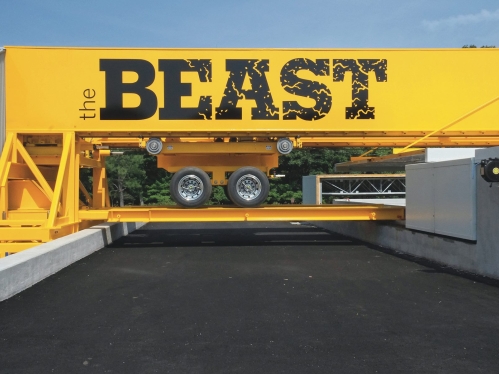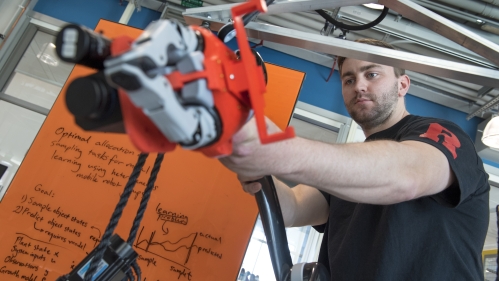
Labs and Facilities
Research Laboratories
Research groups, dedicated labs, facilities, and specialized equipment add to the research expertise at the School of Engineering. The list below captures a portion of the school's labs and research groups. Department websites will include a fuller list specific to research areas of focus.
Nanofabrication Core Facility
The primary objectives of Nanofabrication Core Facility include supporting SoE research activities; engaging in workforce development activities that provide students and postdocs with skills and capabilities that can be readily applied in high-tech industries and research institutes; promoting research collaborations between research centers and industry; and procuring research income through grants, user access fees, and training programs; as well as leading applications for competitive state and federal grants.

Urban and Coastal Water Systems Laboratory
Features include fluid mechanics and hydro-environmental informatics to addressing water resources engineering challenges. The lab is equipped with a hydraulic wave and sediment flume, hydrology apparatus, volumetric hydraulic benches, stormwater green infrastructure testing platform, as well as environmental modeling and informatics facilities with access to the leading-edge computational clusters, a real-time environment monitoring center, and a sensor fabrication space with testing equipment.

Advanced Manufacturing Laboratory
The four research thrusts of this lab are advanced manufacturing, sensing network (e.g., 5G), machine learning, and advanced control. State-of-the-art equipment includes machine tools, metrology equipment, and materials testing facilities. The ongoing research projects have broad impact on aerospace, healthcare, tooling, automotive, energy, and materials industries.
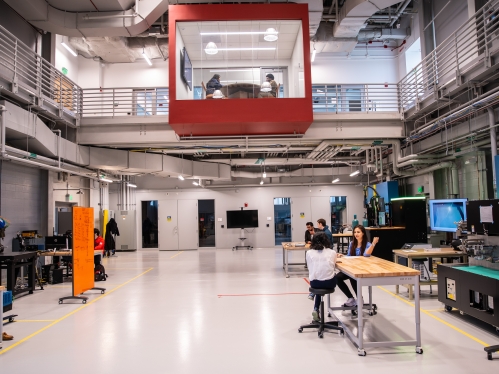
Emil Buehler Aerospace Laboratory
The Buehler Aerospace Lab is a two-story testing space for drones and aerospace projects. In conjunction with the Emil Buehler Supersonic Wind Tunnel, research conducted within this space integrates the critical components of aerospace systems including aerodynamics, sensors, flight control, advance materials, advanced manufacturing, and flight testing.
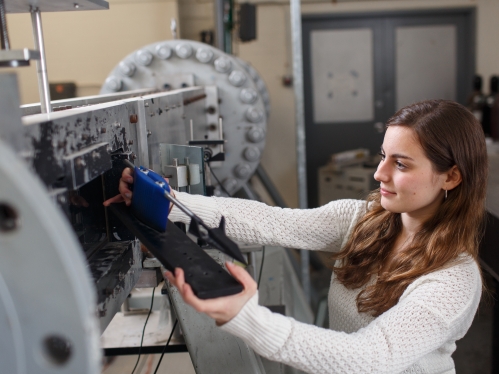
Corning Glass Science and Engineering Laboratory
The Corning Glass Science and Engineering Laboratory is a facility funded in large part by a grant from Corning Incorporated and established to provide a resource for basic and applied research in glass science and engineering, and to provide an interdisciplinary facility for undergraduate and graduate instruction in glass processing.
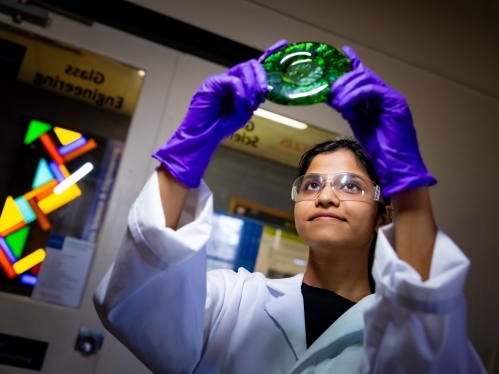
Brian and Stacey Reilly Sustainable Infrastructure Laboratory
Includes practical aspects of destructive and non-destructive testing of structural elements/construction materials such as hardened concrete, steel, wood, and masonry. It has several testing machines to characterize the mechanical properties of these materials. The lab also provides facilities for testing aggregate, cement, admixtures, additive materials and fresh concrete, as well as for testing structural components and assemblies (under static and dynamic loads) including beams, columns, slabs, trusses.
ORBIT Wireless Test Bed Laboratory
ORBIT is a two-tier wireless network emulator/field trial designed to achieve reproducible experimentation, while also supporting realistic evaluation of protocols and applications.
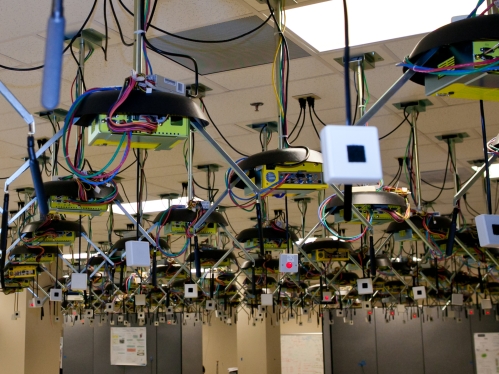
Pharmaceutical Engineering Laboratory
Center for Structured Organic Particulate Systems (C-SOPS) brings together a cross-disciplinary team of researchers from major universities to work closely with industry leaders and regulatory authorities to improve the way pharmaceuticals, foods and agriculture products are manufactured. C-SOPS focuses on advancing the scientific foundation for the optimal design of SOPS with advanced functionality while developing the methodologies for their active control and manufacturing.
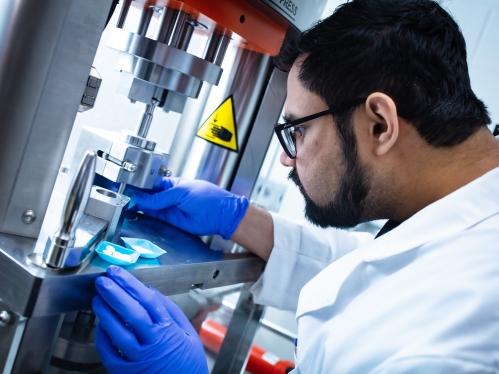
Human Machine Laboratory
A home to modeling and simulation software platforms (for manufacturing, transportation and energy systems) and the state-of-the-art hardware and software on eye-tracking, human ergonomics, EEG devices, mini robots and cobots. The laboratory also includes an in-house built driving simulator primarily used by students for driving data collection and for research.
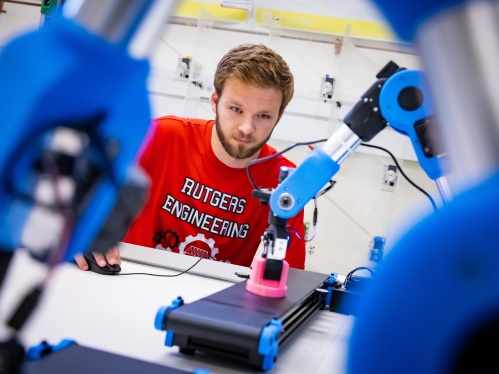
Robotics Laboratory
The Robotics Lab provides space and infrastructure for research and development for enhanced systems ultimately impacting manufacturing, agriculture, elder assistance, home automation, vehicle automation, and more. Located in Richard Weeks Hall of Engineering, the lab is a multi-disciplinary space that provides students and faculty a dedicated space for collaboration and innovation.
The BEAST
The world’s first accelerated testing facility for full-scale bridge systems, the BEAST subjects bridges to extreme environmental and traffic loading to simulate decades of deterioration in months instead of years. The BEAST eats bridges, spits out quantitative data on materials and components performance, and could save billions in infrastructure costs.
